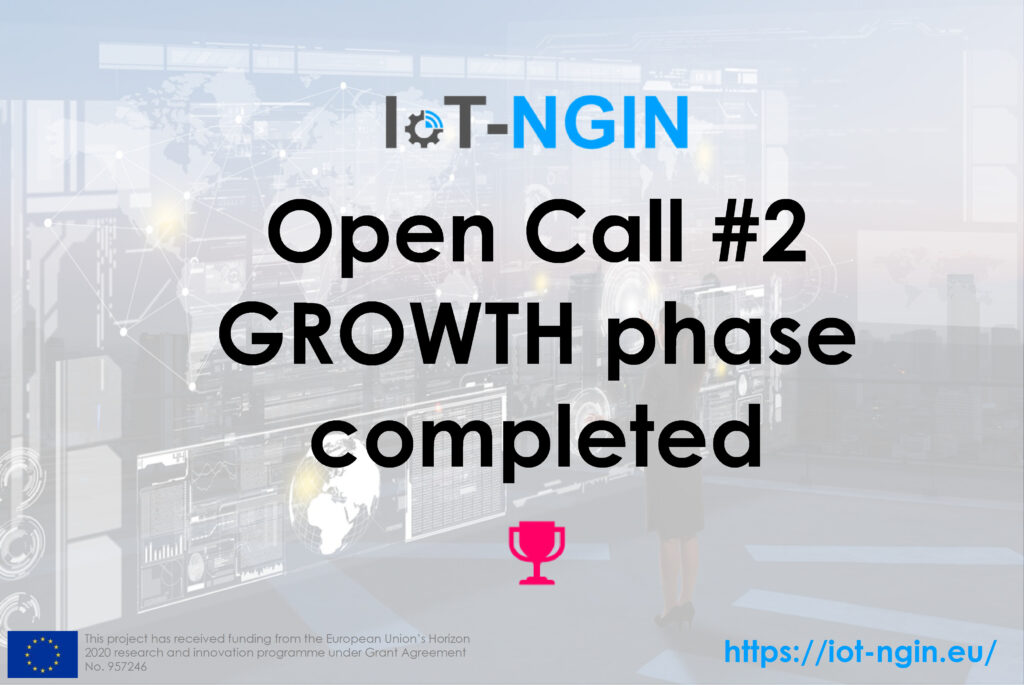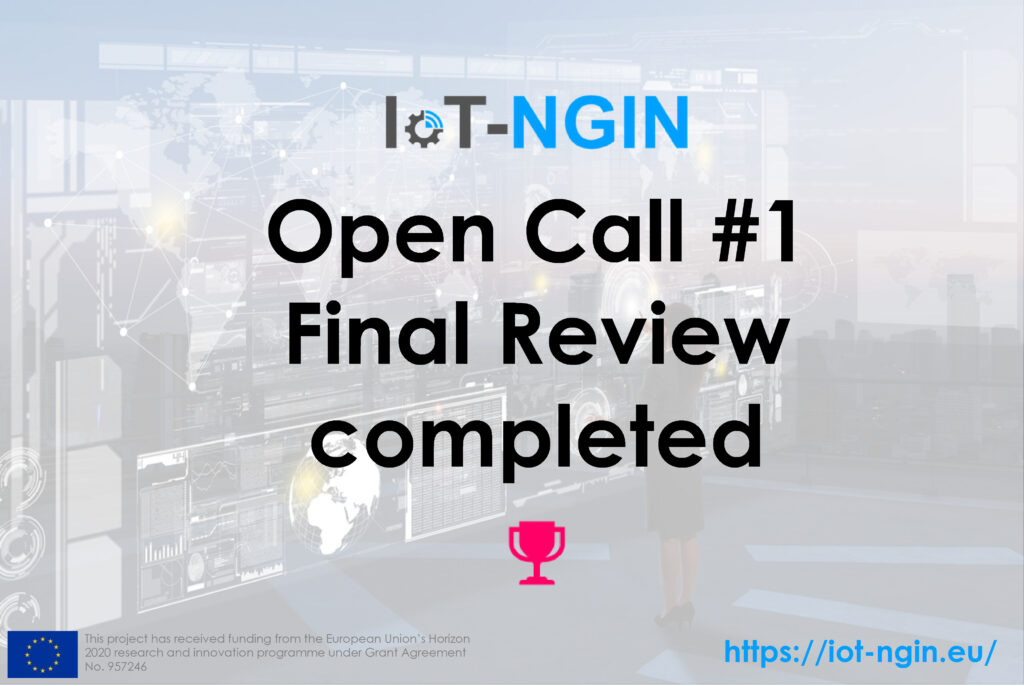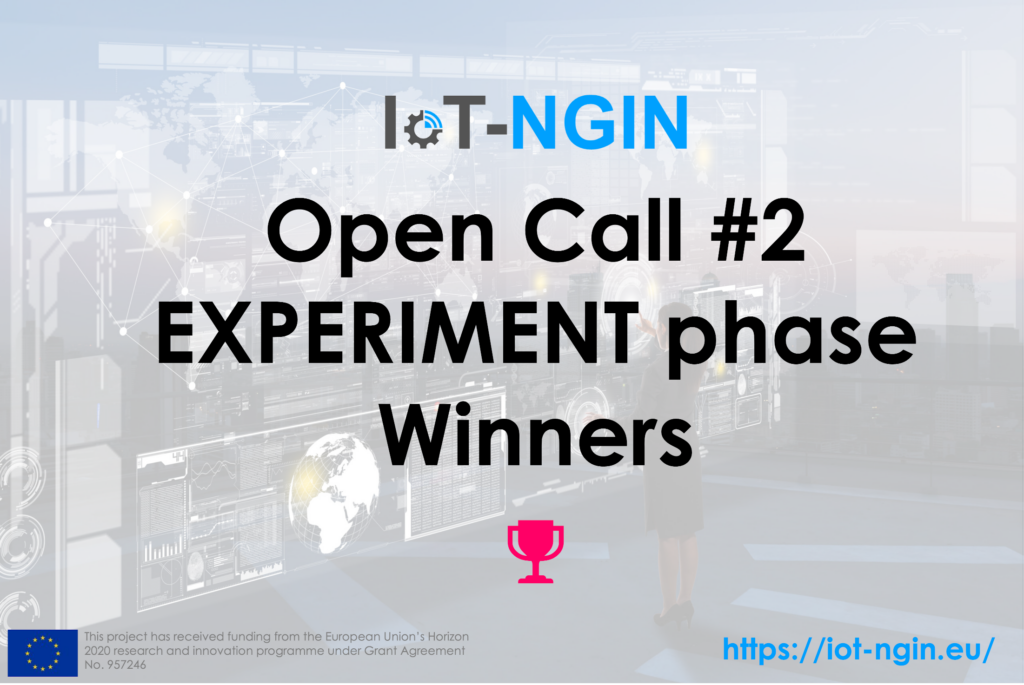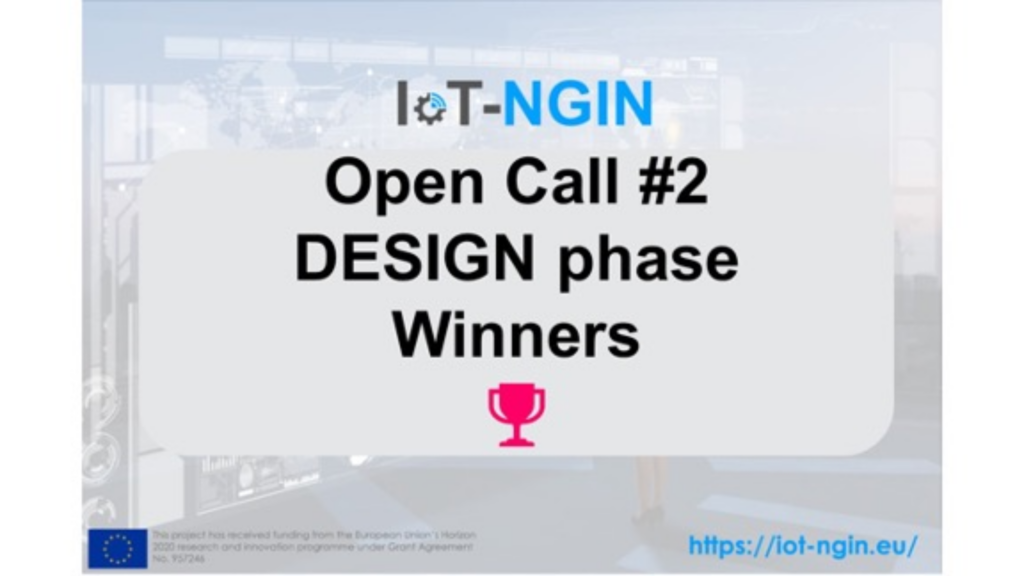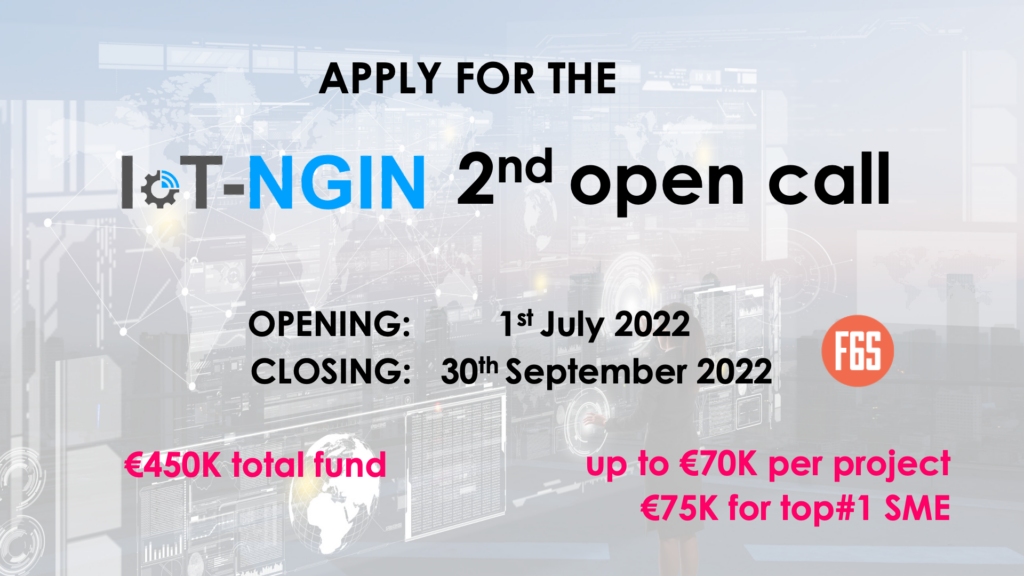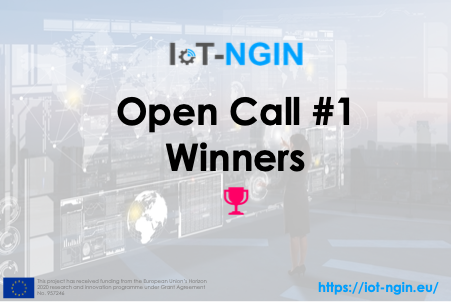IoT-NGIN will enhance the public awareness and increase the IoT-NGIN community, embracing new members in the IoT-NGIN consortium through its 2 open calls.
- The 1st Open Call started at the beginning of the second year of the project and ran for 3 months. Selected projects will run for 18 months. We invited IoT devices manufacturers, embedded software and FPGA/soft core SMEs to join the IoT-NGIN consortium by offering a) open interfaces and access to their IoT systems or b) embed IoT-NGIN meta-architecture extensions and/or software components or porting SW components to FPGA/soft core. The funding for each new participant will be up to 150K€ and, as expected, 5 new partners have joined the IoT-NGIN community via this open call.
- The 2nd Open Call started at the end of the second year of the project and ran for 3 months. Selected projects will run for 9 months. We invited SMEs active in IoT applications development to implement innovative IoT applications and services that use heterogeneous IoT and IoT-NGIN components to offer new services. The total amount of funding that each SME may receive is up to €75.000.

